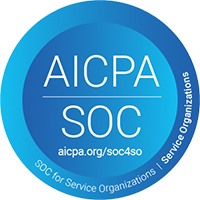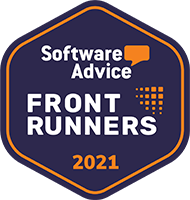5 Effective Solutions to Use for Inventory Optimization in Stockrooms

In order to uphold a high level of customer service while reducing costs and avoiding waste, businesses must find ways to optimize their inventory. Reliable inventory optimization techniques help to boost productivity and efficiency while building trust with customers.
Importance of Inventory Optimization at the Point-of-Use
From plumbing contractors to healthcare clinics, organizations of all kinds rely on inventory optimization as a prerequisite for daily operations to take place as expected. Organizations must strategically manage and optimize their inventory in order to:
- Reduce waste
- Decrease inventory and carrying costs
- Streamline replenishment processes
- Deliver positive customer experiences
- Utilize staff hours efficiently
By developing an inventory optimization strategy and leveraging software to help track and manage inventory counts and orders, organizations can save on resources and deliver high-quality service for their customers.
Inventory Optimization Techniques
There are various options when it comes to inventory optimization solutions. The structure of a business and their specific inventory needs will help determine which inventory optimization techniques might work best for them. The following six solutions are popular strategies for optimizing inventory.
1. ABC Analysis
Companies that use ABC analysis as their inventory optimization technique categorize each inventory item into one of three categories:
- Class A items have the most significant impact on the company’s revenue. These are the most high-value products.
- Class B items are of some importance but are not as impactful as class A items.
- Class C items are the least important to the company and often the least costly.
Based on these classifications, the company completes cycle counts at varying intervals for each class and item. Inventory managers will generally focus the majority of their time and effort on the class A items. Based on these counts, they place replenishment orders as needed.
In order to ensure that counts are accurate and no items are skipped, many organizations leverage inventory optimization software such as eTurns TrackStock. This software can help cycle count inventory with added precision and create automated orders to any supplier when minimum thresholds are triggered.
2. Safety Stock Optimization
Implementing the strategy of safety stock optimization involves keeping a buffer inventory (or “safety stock”) on hand in order to protect the business from uncertainties in demand fluctuations and supply chain disruptions. For best results, businesses must determine the correct amounts of safety stock to keep on hand. Keeping excessive amounts of safety stock results in overspending on carrying costs, while underestimating the amount of safety stock needed can lead to stockouts and decreased customer satisfaction.
Software such as TrackStock allows companies to optimize inventories by adjusting their reorder points and order quantities based on min/max tuning analytics that factor in their past item usage. Optimized min/max levels allow businesses to keep their inventory levels within a specified range based on demand levels, real-time usage, and lead times.
3. Demand Forecasting
Some businesses practice demand forecasting in order to make decisions about their inventory levels and order quantities. This is a classic strategy, but it has one major weakness: it looks backward with a reliance on historical orders.
A more reliable strategy is to track actual usage, with the help of a Customer-managed Inventory App like TrackStock, and tune your min/max levels to trigger optimized replenishment. Inventory management software like TrackStock makes it easy to identify usage trends and set optimized inventory levels.
4. Vendor Managed Inventory
In some cases, businesses find that managing their own inventory is simply not an option and they hire a supplier to do it instead. This model is called vendor-managed inventory, or VMI. Suppliers are responsible for keeping track of inventory counts and creating replenishment orders as needed. This role requires heightened precision at a large scale, meaning pencil and clipboard or spreadsheet processes are not enough. To avoid human error and issues such as overstocking and bin-stuffing, suppliers must leverage advanced inventory optimization software such as TrackStock.
5. Lean Inventory Management
The concept of lean inventory management refers to an effort toward minimizing waste in terms of time, materials, and labor. Lean inventory management seeks to meet customer demands with heightened efficiency. To this end, businesses often use strategies like just-in-time inventory management in order to reduce lead times as well as carrying costs. These systems rely on responsiveness, precision, and a thorough understanding of inventory flow and value.
Regardless of the solutions and strategies at play, accurate inventory tracking and automated order creation play an important role in inventory optimization. Inventory optimization software like TrackStock allows for cost reduction, greater efficiency, and decreased risk.




